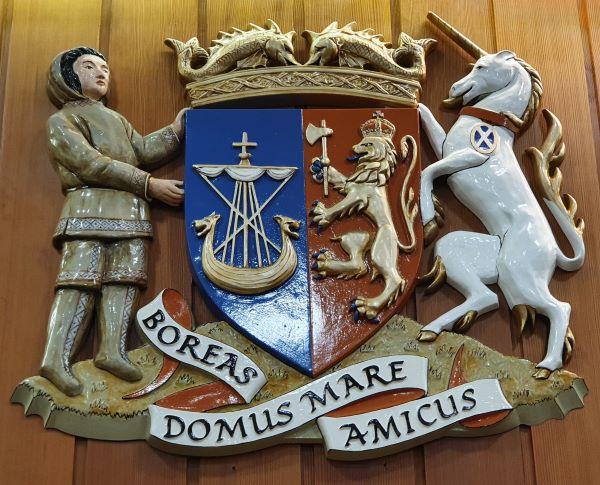Pilot Whale Stranding at Roo Beach, Sanday
Date: 15 August 2025
Time: 11:00 AM

Following the stranding of 23 Pilot Whales at Roo Beach in Sanday, the decision has been taken to leave the whales in-situ and allow for nature to take its course.
The decision has been taken following careful consideration of all the options available and the various factors at play including the advanced state of decomposition of the whales and the location of the stranding.
Discussions have taken place with a number of agencies including SEPA, NatureScot and NHSO Public Health – as well as representatives from the Sanday community - and it has been agreed across the board that this is the best course of action.
We would continue to strongly advise local people and visitors to stay away from the area.
Here is a little bit more information about our decision making process.
Why has Orkney Islands Council decided to leave the whales where they are?
Following the discovery of 23 deceased pilot whales at Roo Beach in Sanday, we have taken the decision to leave the remains in situ and allow natural decomposition to occur. This decision was not taken lightly and follows careful consideration of a wide range of expert advice, environmental factors, and community views.
Who was consulted before making this decision?
A broad range of organisations, agencies, and individuals were consulted, including:
- NatureScot
- Scottish Environment Protection Agency (SEPA)
- British Divers Marine Life Rescue (BDMLR)
- International Whaling Commission Strandings Initiative (IWC Strandings Initiative)
- Scottish Marine Animal Strandings Scheme (SMASS)
- NHS Orkney Public Health
- Local elected members and community representatives
- The landowners of the site
Each of these stakeholders contributed valuable insight into the environmental, logistical, and public health considerations involved.
What were the other options considered?
Six potential options were reviewed:
1. Burial on the beach
2. Burial on land
3. Disposal at sea (whalefall)
4. Incineration
5. Landfill
6. Natural decomposition
Due to the remote and sensitive location, lack of local facilities, and the advanced stage of decomposition, all options except natural decomposition were deemed either impractical or environmentally unsuitable.
Why can’t the whales be buried or removed?
The stranding site lies within several legally protected areas, including:
- East Sanday Coast Site of Special Scientific Interest (SSSI)
- Special Protection Area (SPA)
- Ramsar Site (wetland of international importance)
- Special Area of Conservation (SAC)
Any intervention involving machinery or excavation would require multiple consents and environmental assessments, which are unlikely to be granted due to the potential for ecological harm. Additionally, the whales are already in an advanced state of decomposition, making removal both difficult and potentially more damaging to the environment.
Is it safe to leave the whales there?
Yes. SMASS has already taken samples from all 23 whales and addressed the risk of gas build-up, which can sometimes cause carcasses to rupture. All the same, signage and public messaging will be used to advise people to avoid the area.
What are the environmental benefits of leaving the whales in place?
SMASS has highlighted that leaving the carcasses in situ can support the local ecosystem. Decomposing whales provide nutrients and food sources for a range of marine and coastal species, contributing to biodiversity and natural processes.
What does the local community think?
Local residents, including the Community Council and the landowners, have expressed support for allowing nature to take its course. Concerns were raised about the challenges and risks of transporting the whales, and there was a shared view that the remote location and late discovery made natural decomposition the most appropriate option.
What happens next?
We’ll be working with NatureScot and NHSO Public Health to finalise monitoring and mitigation measures. Public signage and communications will be put in place to ensure awareness and safety.
-
Category:
- Community





